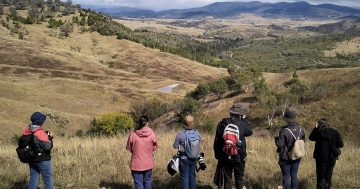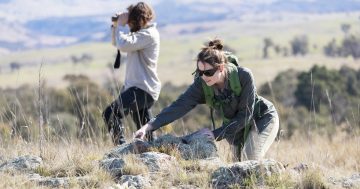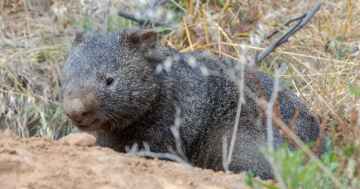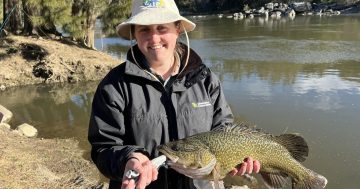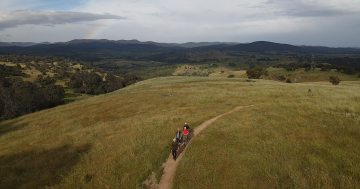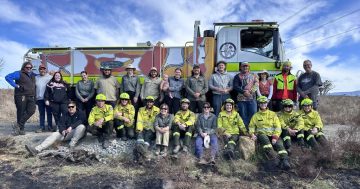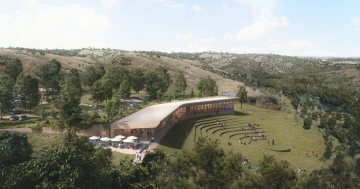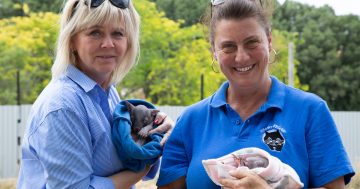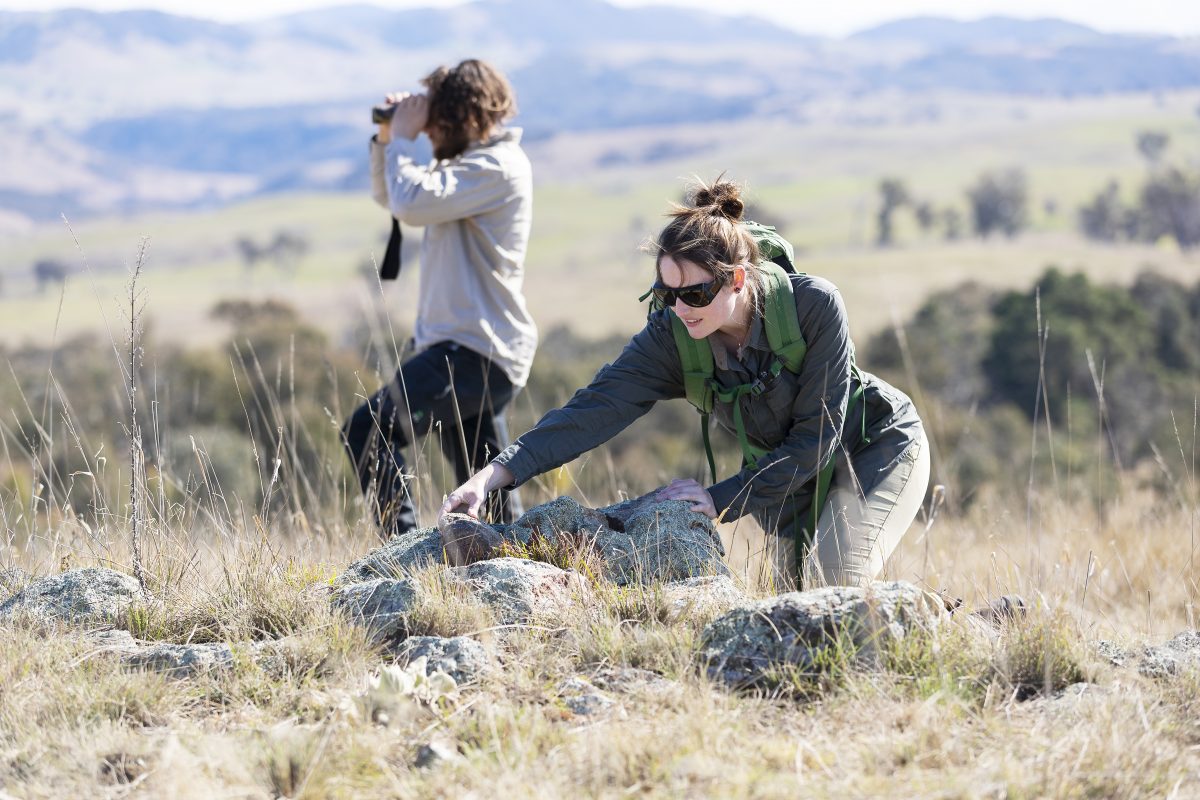
The Ginninderry Conservation Trust is charged with protecting the cultural and environmental values in the Conservation Corridor. Photo: Ginninderry.
When the time came to drain four dams for the Ginninderry greenfield development, Ginninderry Conservation Trust program director Angela Calliess made a startling discovery.
“There was no legal requirement to check for wildlife in the dams before filling them in,” she says.
Her team donned waders and, scouring the dregs, rescued about 140 eastern long-neck turtles who had hunkered down into the mud for winter.
The specimens of this key local species were released into other waterways across the Ginninderry Conservation Corridor after weight/sex/age data was collected for Ginninderra Waterwatch’s turtle research project. This, and the practice of investigating dams before draining and filling, became standard in Ginninderry’s ever-evolving approach to conservation.
It’s even gone on to influence practices at other surrounding developments, according to Angela.
“We’ve been able to influence things, change things. That’s really exciting,” she says.
Many examples like this highlight the benefits of environmentalists, conservationists and sustainability experts working hand-in-hand with developers, but Angela says the practice is still quite unusual.
“In my career I have worked with Greening Australia and similar organisations, but until I started working for the trust four-and-a-half years ago, I had never worked with a developer,” she says.
The Ginninderry Conservation Trust is charged with protecting the cultural and environmental values in the conservation corridor where Ginninderry, a new community that will eventually grow to house 30,000 people, is being built.
The trust works closely with other experts to identify improvement opportunities. This includes a partnership with Wombat Rescue which is monitoring the wombat population for mange and treating sick animals; an ongoing partnership with University of Canberra (UC) academics who provide water quality monitoring and reporting services to the Ginninderry development team; several research projects with the Australian National University (ANU); and citizen science with community groups such as Friends of Grassland.
Angela says the trust has been able to shift focus from reactive problem solving to proactive over the years, ensuring the learnings that come from these partnerships are baked into Ginninderry’s processes.
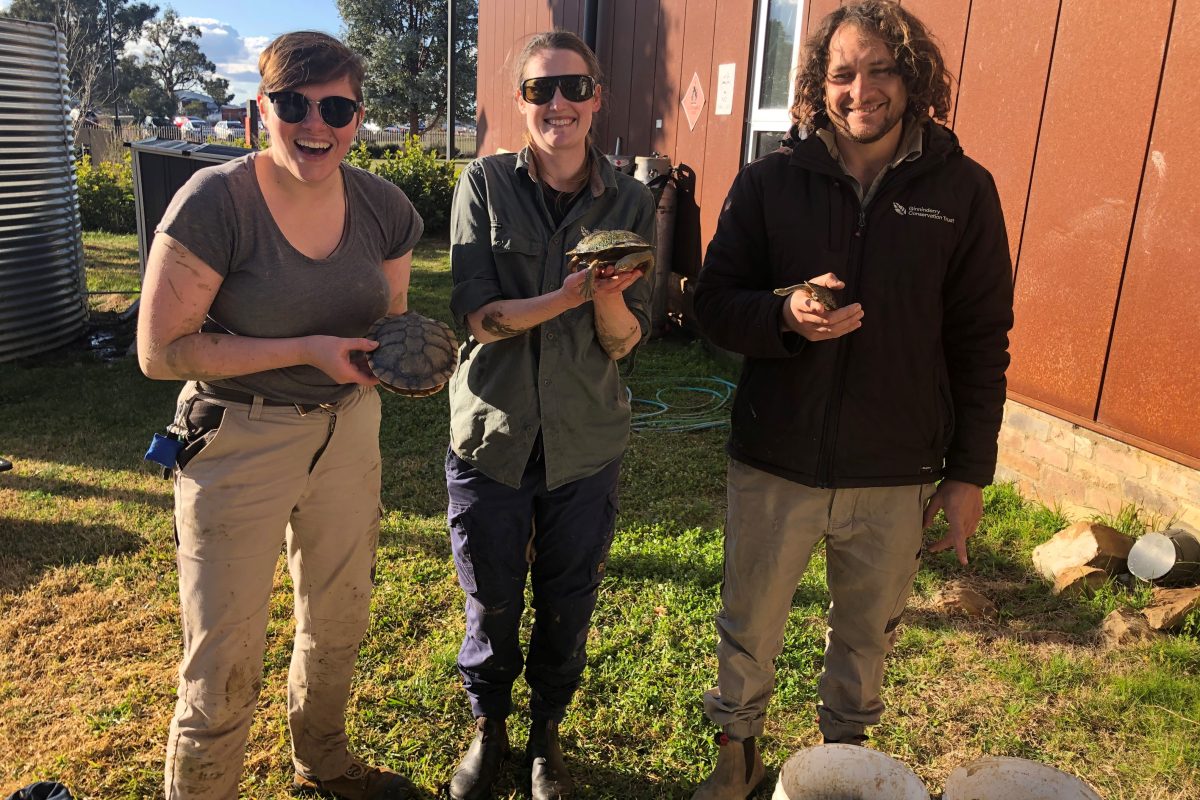
After 140 eastern long-neck turtles were rescued, it became standard practice to check dams for wildlife before draining and filling. Photo: Ginninderry.
This extends to third-party contractors working with Ginninderry – such as Huon, the company behind its civil works.
To avoid runoff polluting surrounding waterways with sediment when they overflow, Huon has developed a practice of releasing water from dams in response to warnings of heavy rain.
“Being a part of the team that includes contractors like Huon and the Ginninderry development team means we all get to see the whole picture and understand each other’s main points. That relationship is a game changer,” Angela says.
“It would be easy as an environmental group to sit back and throw dirt at the ‘big bad developer’, but we’ve found sitting at the same table and engaging one another in good conversations to be a more effective way of creating change. The key thing here is that there needs to be a table to sit at and unfortunately that is not always offered by developers.
“Ginninderry is already ahead of the game as Canberra’s only 6-Star Green Star community, but I think what really sets them aside is how they adapt to what unfolds with each step of this development. As they grow and develop more land, we expect to see them continuing to adapt, and we’ll be right there alongside them.”
Ginninderry senior development manager Imran Khan has enjoyed watching the arrangement challenge a common misconception: that the agendas of environmentalists and developers must be innately conflicted.
Speaking from experience, Imran says a collaborative approach between conservationists and developers need not be onerous.
“It’s in our DNA at Ginninderry to be transparent in how we operate. Even when it comes to our briefs for contractors, our expectations for how they must ensure they do not pollute the corridor is clearly laid out, and much of it is informed by the feedback loop with the trust,” he says.
“We meet regularly, hear from everyone and through that process, if anything isn’t working in terms of our controls, we look at ways to adjust our methods or processes. This includes cases where things are working, to determine if it can be done even better.
“That has developed a level of trust, so nobody is afraid to speak up if things go wrong and come up with solutions on how to fix it. We build a culture where innovation is central to our thinking.
“What that has done is encourage our contractors to trial different methods and controls – from silt curtains to sacrificial plants. There’s really nothing conventional in how we operate, but that means we’re able to innovate and adapt, and those who work with us are encouraged to do the same.”
For more information about conservation activity past, present and future in the Ginninderry Conservation Corridor, contact the Ginninderry Conservation Trust.












